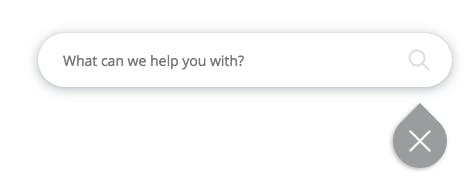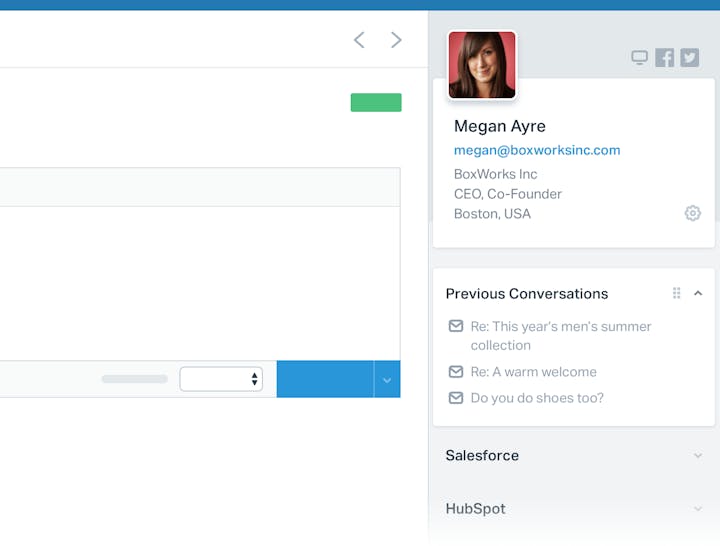Self-Service is the Next Frontier in Customer Support


I know it’s January, but this isn’t one of those posts where I make bold predictions about the future of customer support and how it will evolve in 2018.
Instead, I want to talk about what a world-class customer experience looks like today and how we’re redesigning parts of our product to enable those experiences for your customers at scale.
I’m not going to recite a bunch of statistics about the value of a lost customer or the percentage of people who abandon a service after a bad experience. If I have to sell you on the new definition of customer support, this post is not for you.
This is a post for customer-centric businesses that get it. You know the value of a great experience and don’t need a spreadsheet to tell you it’s the right thing to do. Being customer-centric is who you are on a DNA level — it will not change. I’m writing this post for you.
At Help Scout, we’re doing everything we can to build a product that embodies your values, because they’re our values too.
We’re all facing the same challenge:
Fast email support and friendly help over the phone are no longer the differentiators they once were.
A great customer experience is much more than that, which is why our team has been hard at work for many months, addressing what we see as three big keys to creating a great customer experience. I’ll share the keys with you today, and in the coming months we’ll be launching new products and features that address each one.
Integrated help
When a customer figures something out through self-service, it’s a big win for both sides. Among consumers, 71% want the ability to solve most customer service issues on their own (up from 64% the previous year). When you get it right as a business, self-service is an infinitely scalable, cost-effective way to make customers happy.
The best implementation of self-service is when it’s an extension of the user experience. A lot of the hype is about chatbots, but we think there’s an opportunity to be helpful before an interaction like that takes place, in a more seamless way.
What if it were possible to answer the customer’s question before they ask it?
To address this, we’ve been working on an all-new version of our Beacon product. Today it functions much like any other website embed, where the customer has to ask it a question:

The new version is a lot smarter. It learns from the page you’re on, what others have been searching for (or found helpful) on the page, and suggestions curated by your team to offer relevant answers before you ever ask a question:

Beacon will become a more integrated part of the user experience in a couple other unique ways we’re not ready to talk about yet, but we’re really excited to share this tool with you.
High-bandwidth conversations
When you have a conversation with a customer, context is and always will be the most important factor if you want to deliver a great experience. It’s beyond frustrating for customers to have to feed information the company should already know to a support professional before they get help. Channels may come and go, but context will never go out of style.
We invested heavily in context early on with Help Scout. In the customer sidebar, you can see things like previous conversations, public information about the person, and data from 50+ third-party apps. You can even develop your own custom apps to pipe useful context into the sidebar.

Still, we’ve only scratched the surface. We have three big initiatives underway that will improve the level of context you see in Help Scout, enabling higher bandwidth conversations:
1. Fill information gaps: We’re going to make it a lot easier to push valuable data to the sidebar, such as conversations that take place outside of Help Scout and lifecycle events.
2. Organize data: With data across so many apps, we’ve come up with an entirely new way to organize it so that the most valuable/timely context is front and center.
3. Make it actionable: Leveraging context from a high level to better organize and report on your customer base will give your team knowledge and efficiency that isn’t possible today.
We aren’t ready to show you any of this yet, but we’re hard at work on a couple of these projects now.
Staying in the venue with chat
The most significant shift we’ve seen since launching Help Scout is the re-emergence of a 15- to 20-year-old technology: chat.
Customer satisfaction is higher with chat, because it allows the customer to stay in the venue. They don’t have to stop what they are doing or leave the page to find an answer and move on with their day. Most importantly, the answer comes in minutes, not hours.
We’ve always integrated with great chat products, and we will continue to do so. But after interviewing and surveying hundreds of people about chat, there are a few compelling reasons to offer it as a native part of the Help Scout product:
Integrated self-service: Half the people we surveyed have not yet implemented chat because of the demands and costs associated with staffing it. An excellent self-service integration can reduce that burden by 20-30%, and we’re already working hard on that with Beacon and Docs.
Higher bandwidth: We’ve already talked about how critical context is, so bringing the Help Scout sidebar and all its valuable information to bear in chat is a game-changer. Timing is everything with chat, and all that context sets support professionals up for success.
Everything in one place: We’ve talked with a lot of teams that spend their days going back and forth between different products or browser tabs to provide chat and email support to customers. The way we’ve designed it, you can easily manage chat and email support from the same place and seamlessly toggle back and forth.

So there you have it. We believe these three efforts will give Help Scout customers a unique set of tools to deliver epic customer service and build customer-centric brands people love doing business with. We’ll continue to preview these for you in the coming months as we get closer to launching them!
Make your website or app more helpful
Beacon lets you suggest relevant help content, offer live chat, and give customers instant access to their support history — all without leaving your site.
Try for freeThe Supportive Weekly: A newsletter for people who want to deliver exceptional customer service.